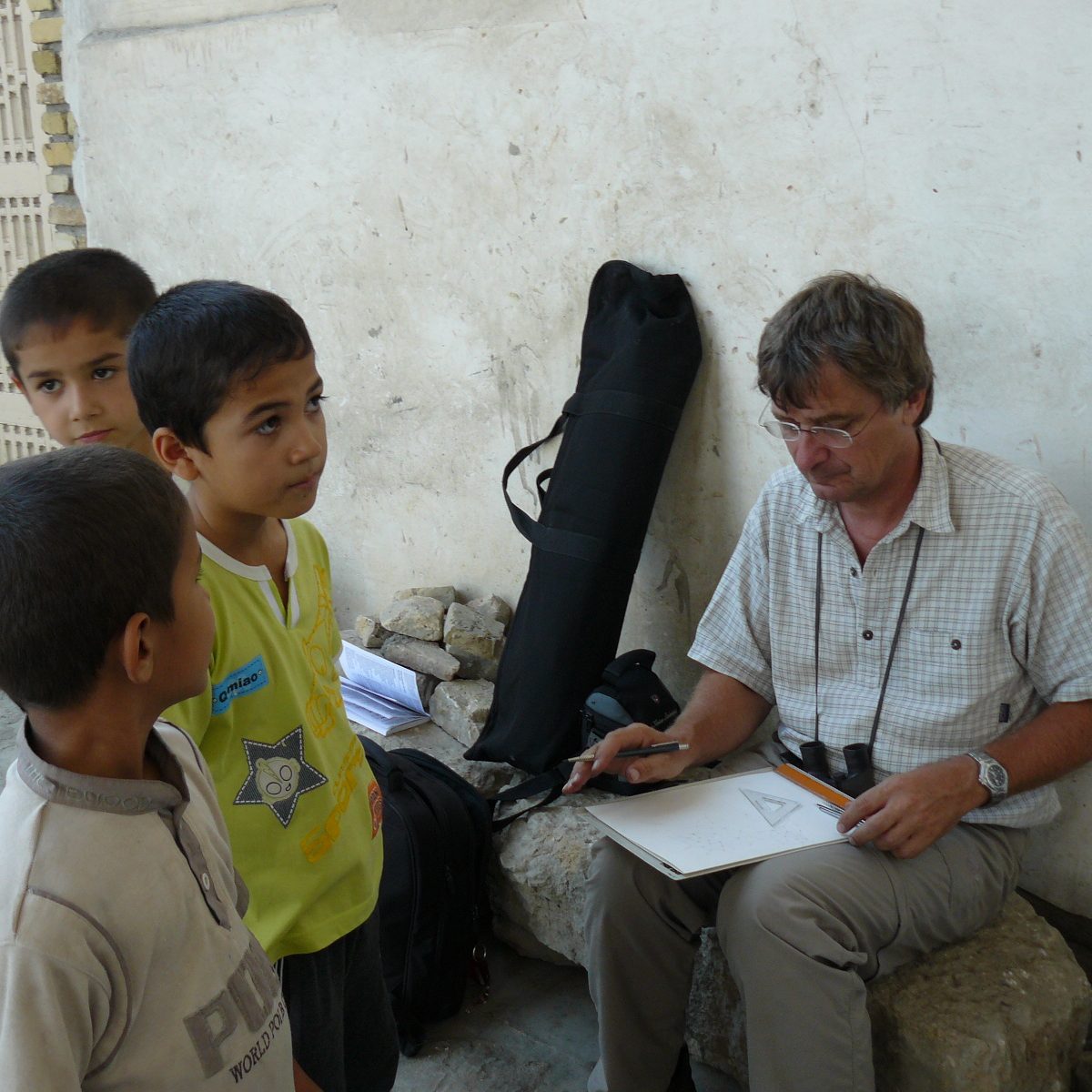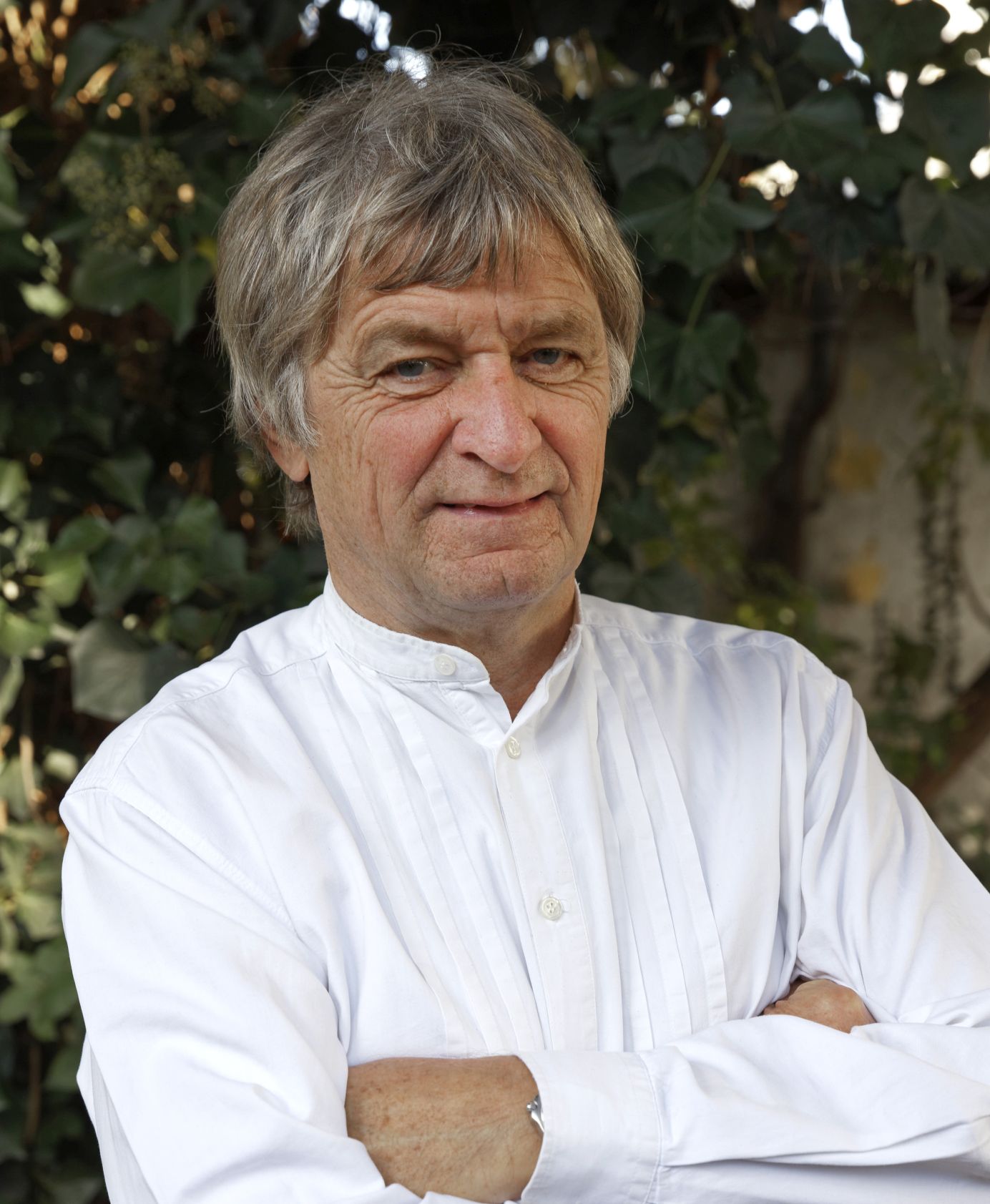
Als Lehrstuhlinhaber für Baugeschichte, Historische Bauforschung und Denkmalpflege an der TUM leitete Prof. Dr. Manfred Schuller zahlreiche Großprojekte. Bei der Untersuchung von denkmalgeschützer Holzarchitektur in der usbekischen Stadt Buchara war der Bauforscher selbst die Attraktion (Bild: Privat).
TUM Emeritus of Excellence Manfred Schuller
“We Had to Fly High up to Avoid Being Shot At”
As a building researcher and building historian, Manfred Schuller pursued these questions with unbroken enthusiasm throughout his life. Building historians usually specialize in one period only. With Manfred Schuller that was not the case. His interests were too diverse. And so the core areas of his research spanned Greek temples, medieval cathedrals and Renaissance palaces, along with Baroque gardens, Islamic architecture and Russian metal construction.
WITH HEART AND SOUL
It was always clear that Manfred Schuller would study architecture, as even as a boy he had collected books on historic buildings. He started his architecture studies at TUM in 1975. At the same time he also studied Classical archaeology and art history at the Ludwig-Maximilians-University. For his diploma thesis under Professor Friedrich Kurrent at TUM in 1981 he received the rare mark of 1.0 – and a number of offers from prestigious architectural firms; but he stuck to his passion, the history of architecture. In 1985, he received the award of the Association of Friends of TUM for his doctorate in architectural history and building research under the renowned chair holder Professor Dr. Gottfried Gruben.
TUM MANAGED TO LURE ME AWAY.
BEYOND THE BEATEN TRACK
Ever since his student days at the TUM, Schuller has found it fascinating that the methods of building research – examining stones and timbers as the primary source, forming chains of clues and linking them together as completely as possible like a puzzle – work for all epochs from Classical times to the 20th century. His lifelong drive was to apply the sophisticated methodology which he had learnt from his doctoral supervisor Gottfried Gruben in the Cyclades to other periods and traditions beyond Doric architecture and outside Greece.
Not only for his own projects, but also for the dissertations he supervised, Schuller’s basic principle was always that of field work. With the cathedrals of Regensburg and Trier and the remains of Lorsch Abbey he was studying UNESCO World Heritage Sites. In Venice he carried out research on St Mark’s Basilica, in Rome and on Greek islands on temples and ruins, and in Russia on the iron constructions of the great engineer Vladimir Shukhov. “Each of these projects had its own attraction,” he says. “Often also due to the location of the monuments, in historic towns or completely away from everything in stunning landscapes.”
LIKE IN THE MOVIES
Manfred Schuller was contacted not infrequently by the tax office. People there could not believe that a university professor was supposedly hanging around in tranquil holiday spots rather than libraries.
If the tax officials had found out about his research trip to the Nakhchivan Autonomous Republic, he would certainly have gotten rid of them. In the hermetically sealed exclave of Azerbaijan Schuller was to investigate monumental medieval burial structures. No foreigners were normally allowed to go there. The only way to get in was by plane from Baku. “We had to fly high up so as not to be shot at from Nagorno-Karabakh,” he says of this adventure. “But the impressive tombs seen in front of the snow-covered Mount Ararat were worth it.”

Manfred Schuller (Photo: Joshua Vela/CDF).
Prof. Dr. Manfred Schuller
Diploma in Architecture 1981, Doctorate 1984
After graduating from high school, Manfred Schuller studied architecture at the TUM from 1975 to 1980, and, in parallel, Classical Archaeology and Art History at the Ludwig-Maximilians-University of Munich from 1976 to 1979. In 1981 he completed his degree at TUM, followed by his doctorate in 1984. From 1986 to 2006 Schuller was Professor of Building Research and Building History at the University of Bamberg. There he was Dean and Vice Dean of the Faculty of History and Geosciences and also a Senator of the university. In 2006 he was appointed to the Chair of Building History, Building Archeology and Conservation at the TUM. Here, until his retirement in 2019, he carried numerous big research projects through to successful completion. In 2019 he was awarded the honorary title of TUM Emeritus of Excellence by TUM President Thomas F. Hofmann.
Even in retirement Manfred Schuller is still working on three major publications. In addition, he will not be giving up his duties on various commissions, such as the State Monument Council of Bavaria and the International Council on Monuments and Sites. Mostly, however, Schuller will spend his retirement with his wife on their estate in Liguria in Italy. There he wants to tend his olive and lemon trees and his large vegetable and herb garden, drink wine and look out over the sea.
